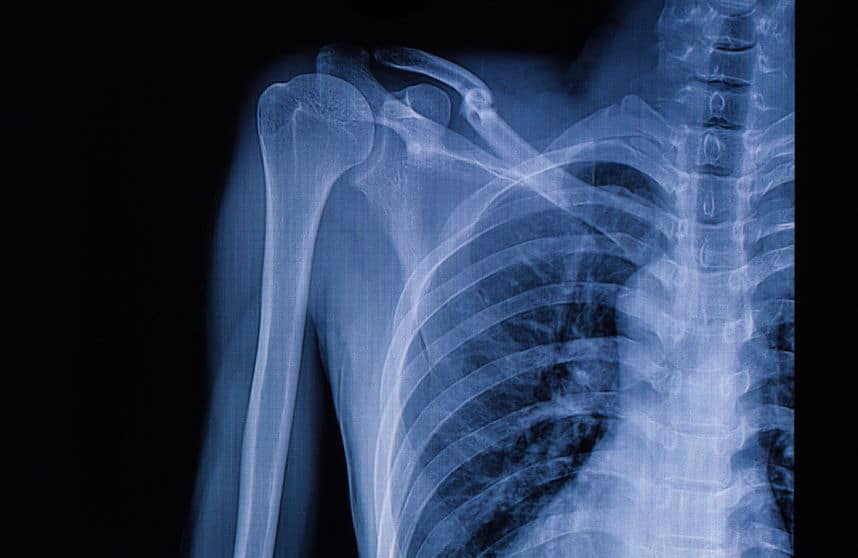Clavicle Fracture

When patients suffer from a broken collarbone their injury is described as a clavicle fracture. This fracture is incredibly common and occurs among people of all ages.
Anatomy
The collarbone lies in front of the ribcage and the shoulder blade. The bone connects the arm to the rest of the body. The clavicle sits above a group of important nerves and blood vessels. These structures are rarely damaged when the clavicle breaks, even though the bone ends can shift when they are fractured. The clavicle is a long bone, so most breaks occur in the middle of it. In some cases, the bone will break where it attaches at the sternum or shoulder blade.
Causes
A direct blow to the shoulder typically causes clavicle fractures. This type of direct trauma can occur during a fall onto the shoulder or a car crash. Falling onto an outstretched arm can also cause a clavicle fracture. In some instances of childbirth, babies can suffer clavicle fractures during their passage through the birth canal.
Symptoms
Clavicle fractures are painful and make it difficult for you to move your arm. The following symptoms are also common:
- A grinding sensation when the arm is raised
- A deformity or lump over the area of the break
- Bruising, swelling and tenderness over the collarbone
- Drooping, sagging shoulder
- Unable to lift the arm
Treatment
Nonsurgical If the broken ends of the bones still line up correctly surgery may not be necessary. Broken collarbones usually heal without surgery. A simple arm sling can be used to bring about comfort immediately after the break and can be worn to support the arm in the correct position as it heals. Muscle strength decreases as the bone continues to heal. Once the bone begins to heal a doctor may recommend starting gentle shoulder and elbow exercises. These movements are meant to decrease stiffness and weakness.
Surgical Treatment If the bone is out of place the doctor may recommend surgery. Surgery will realign the bones and hold them in a good position to heal. During surgery the bone fragments are repositioned and held in place with special screws and possibly metal plates.
In most cases it takes several months to recover from a clavicle fracture. Most patients return to regular activities within 3 months of their injury. Acting outside of your doctor’s recommendation during the treatment period can disrupt the healing process and require you to start your healing process from the beginning.
It is sometimes helpful to take calcium and vitamin D3 while treating a bone fracture.




